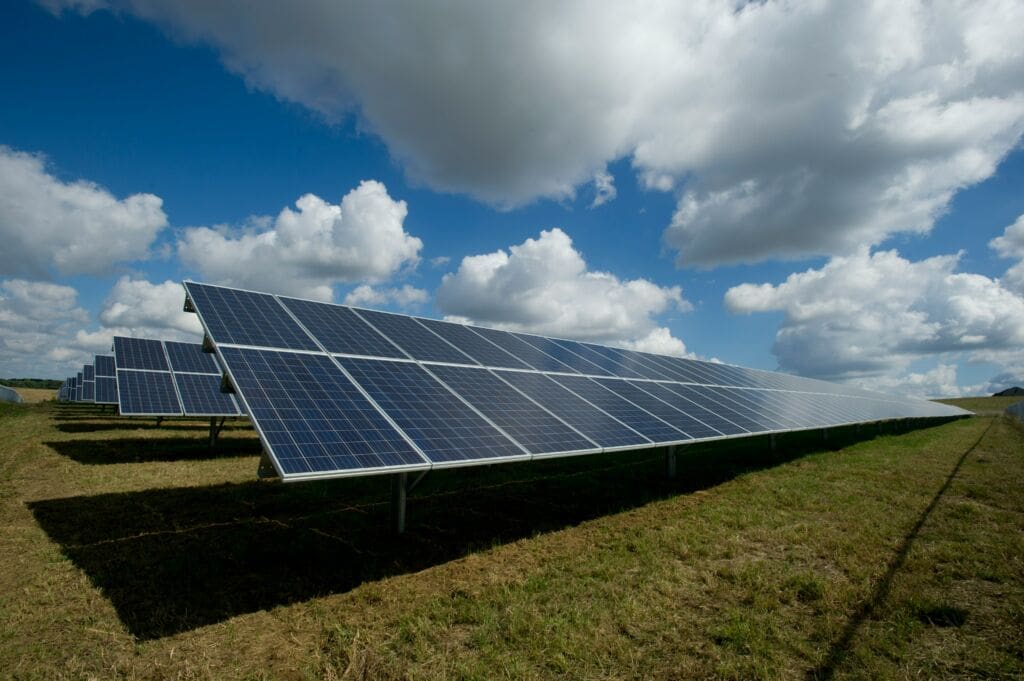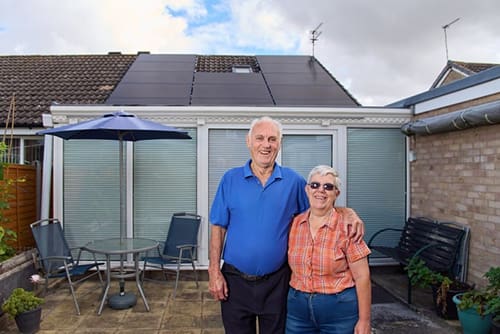The History of Solar Incentives in the UK

With climate change becoming increasingly urgent and traditional energy costs escalating, homeowners in the UK are more interested than ever in renewable energy solutions like solar PV.
Solar energy stands out as one of the most promising alternatives. Over the years, one thing that has made solar PV appealing in the UK is the various government incentives. Understanding the history of these incentives can help you make informed decisions about adopting solar energy in your home.
Here’s a comprehensive look at the evolution of solar incentives in the UK, focusing on Feed-In Tariffs, the Smart Export Guarantee, and the future.
Table of Contents
1. The History of Incentives: The Birth of Feed-In Tariffs (FITs)
Introduced in April 2010, the Feed-In Tariff (FIT) scheme aimed to encourage the adoption of small-scale renewable energy sources, including solar power. Under this program, homeowners who installed solar panels were paid for the electricity they generated, even if they used it themselves. Here are the key features of the FIT scheme:
- Generation Tariff: Homeowners received a set rate for each unit (kilowatt-hour, kWh) of electricity generated. This rate was guaranteed for 20 to 25 years, depending on when the system was installed.
- Export Tariff: Any excess electricity generated and exported back to the grid earned an additional tariff. Initially, this was a flat rate, but it incentivised homeowners to invest in solar panels.
The FIT scheme played a pivotal role in catapulting the UK to the forefront of the global solar market. By 2015, the UK had become one of the largest solar markets in the world. However, the program was not without its challenges.
Challenges and Criticisms
The initial high rates offered under the FIT scheme led to rapid uptake, which put immense financial pressure on the government. Critics argued that the scheme was overly generous and unsustainable in the long term. Consequently, the government began reducing the tariff rates in incremental steps, a process known as “degression.”.
Despite these reductions, the FIT scheme retained popularity until its closure to new applicants in April 2019. The end of the FIT marked a significant shift in the UK’s approach to solar incentives, paving the way for new schemes promoting renewable energy.
2. The Emergence of the Smart Export Guarantee (SEG)
The closure of the FIT scheme left a gap that needed filling. Enter the Smart Export Guarantee (SEG), which came into effect on January 1, 2020. Unlike its predecessor, the SEG places the responsibility for remunerating small-scale solar generators on energy suppliers rather than the government.
Key Features of the SEG
- Market-Driven Rates: Unlike the fixed rates under the FIT scheme, the SEG allows energy suppliers to set their own tariffs for the electricity exported back to the grid. This introduces competition among suppliers, potentially leading to better rates for homeowners.
- No Government Payments: The SEG shifts the financial burden from the taxpayer to energy companies, making it a more sustainable model.
- Eligibility Criteria: Systems up to 5MW are eligible, and the installation must be certified under the Microgeneration Certification Scheme (MCS).
While the SEG offers a more market-driven approach, it has been met with mixed reactions. Some argue that the lack of fixed rates adds uncertainty, making it less attractive for potential adopters.
Comparing FIT and SEG
- Stability vs. Flexibility: The FIT scheme provided stable, long-term payments, making it easier for homeowners to calculate returns on investment. On the other hand, the SEG offers flexibility but comes with market-driven rate variability.
- Ease of Access: The FIT was straightforward, with homeowners knowing what they would earn per kWh generated. The SEG requires homeowners to shop around for the best rates, adding a layer of complexity. You don’t have to get your SEG from the same supplier from which you get electricity.

Incentives for Domestic and Commercial Markets
Both the FIT and SEG schemes cater primarily to the domestic market, but they have implications for commercial enterprises as well. Here’s a look at how each market benefits from solar incentives.
Domestic Market
For homeowners, the primary incentive is the ability to reduce monthly energy bills while earning through exported electricity. Additional benefits include:
- Energy Independence: Reduced reliance on the grid provides greater energy security.
- Environmental Impact: Lower carbon footprints contribute to broader environmental goals.
Commercial Market
Businesses also stand to gain significantly from solar incentives. Key advantages include:
- Cost Savings: Large-scale installations can result in substantial reductions in operating costs.
- Corporate Social Responsibility (CSR): Adopting renewable energy enhances a company’s CSR profile, appealing to environmentally-conscious consumers and investors.
3. The Future of Solar Incentives in the UK
With the arrival of the new Labour government, the future of solar incentives could again change. Labour has historically supported renewable energy initiatives, and based on what the new government has said so far, it could and should include ambitious plans for expanding solar energy adoption.
The new administration has pledged to significantly ramp up renewable energy initiatives, echoing its commitment to combat climate change and promote energy independence. Key points made by government officials surrounding solar energy so far include:
- Increased Funding for Solar Projects: The new government has announced plans to allocate additional resources to support domestic and commercial solar installations. This funding aims to facilitate installation and improve the technological infrastructure needed for efficient energy storage and grid integration.
- Reintroduction of Incentives: One of the cornerstone policies is the reintroduction of attractive incentives for solar adoption. These might resemble aspects of the previous FIT scheme, providing homeowners and businesses with guaranteed returns on their solar investments, thus encouraging greater uptake.
- Emphasis on Community Solar Initiatives: Labour has expressed support for community solar projects that enable local groups to harness solar energy collectively. This initiative aims to democratize energy access and promote collective ownership, empowering communities while reducing reliance on traditional energy sources.
- Long-Term Goals for Energy Transition: The government has set ambitious targets for achieving net-zero carbon emissions by 2050, with solar energy playing a pivotal role in this transition. Promoting solar power is vital to reducing the country’s reliance on fossil fuels and enhancing overall energy security.
We don’t yet know what incentives the new government could offer, but here are three possibilities they might consider:
Potential Future Incentives
- Green Grants: Labour’s proposed Green New Deal aims to provide grants and low-interest loans to support installing renewable energy technologies, including solar panels.
- Enhanced SEG Rates: There may be regulatory changes to ensure more competitive rates under the SEG, making it more attractive for homeowners and businesses.
- Tax Incentives: Potential tax breaks for domestic and commercial solar installations could further reduce the initial investment burden.

In Summary…
The history of solar incentives in the UK is a testament to the country’s commitment to renewable energy. From the high initial tariffs of the FIT scheme to the market-driven approach of the SEG, these incentives have played a crucial role in driving the adoption of solar energy. There may be more incentives to come under the new government, so watch this space. The first Labour Budget is expected in September this year, and we’ll be watching to see if any new incentives are announced that could benefit you, the customer.
If you’re a homeowner considering solar energy, now is an excellent time to explore your options. The combination of existing incentives and potential future benefits makes it a compelling choice for anyone looking to reduce their carbon footprint and save on energy costs.
Click here to find our solar panel experts in your area.




